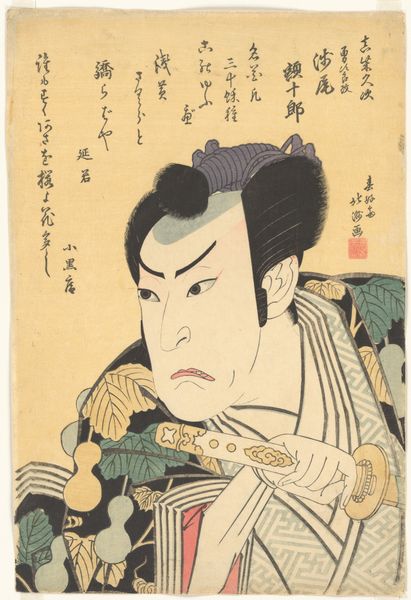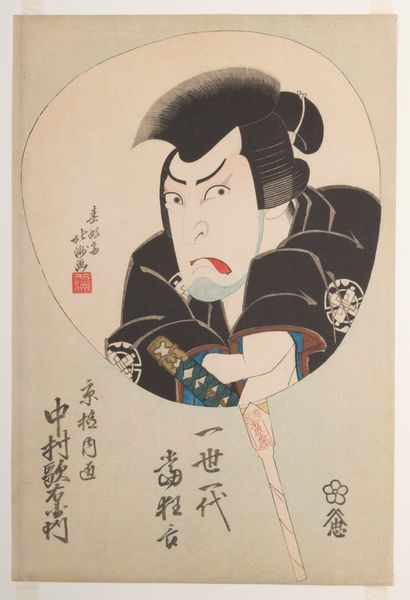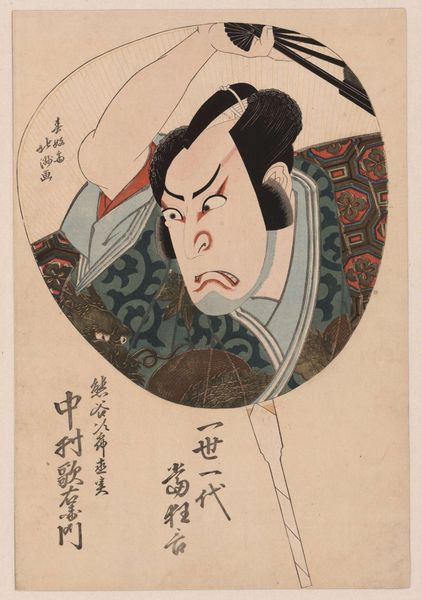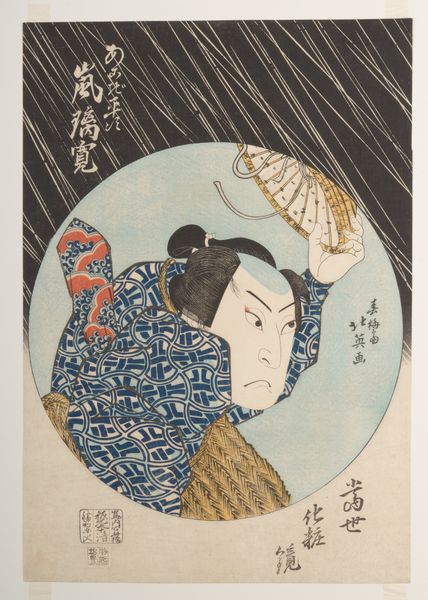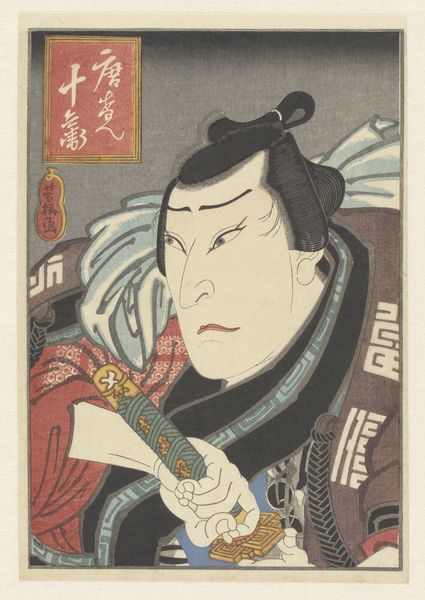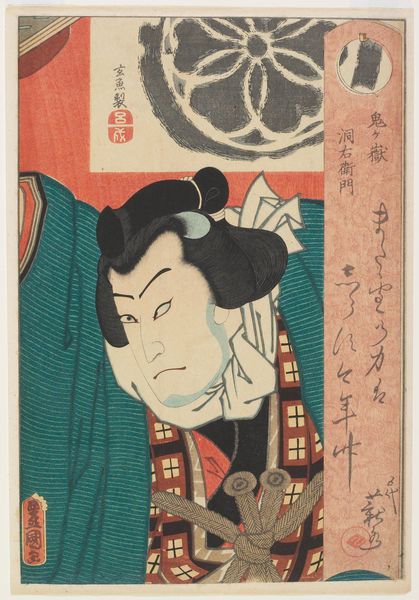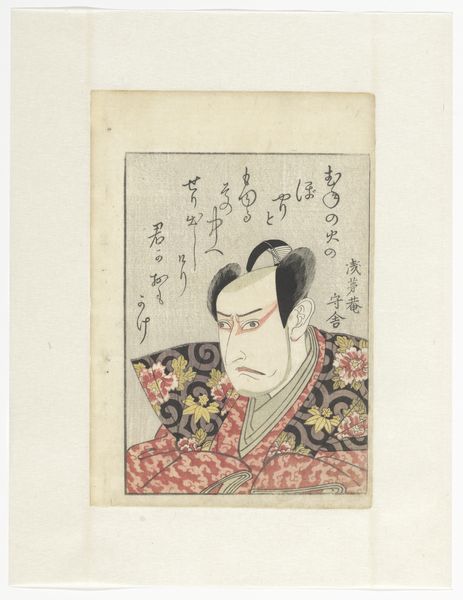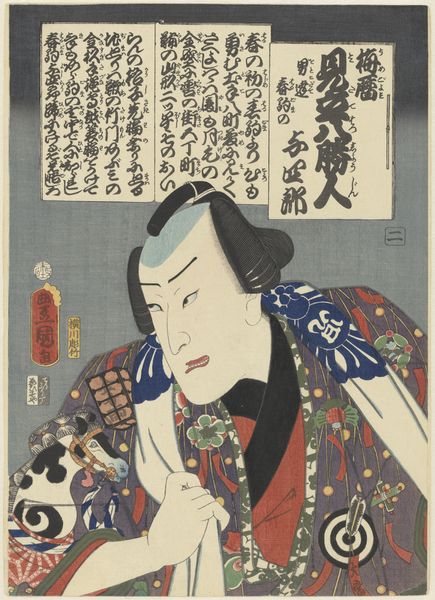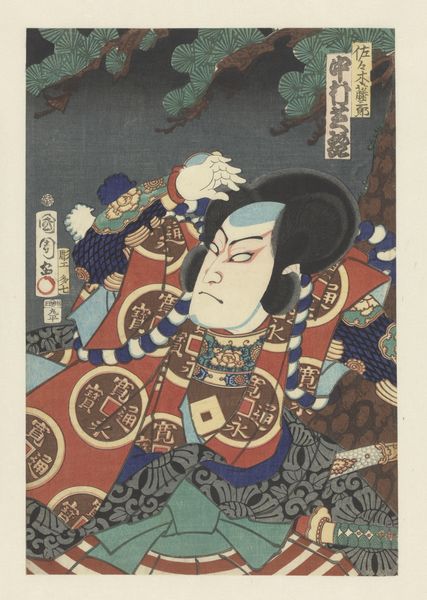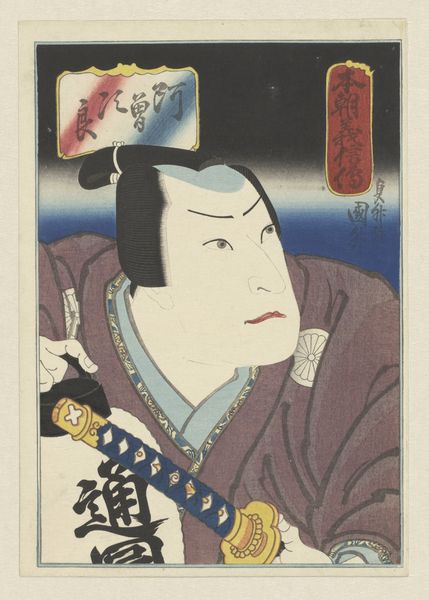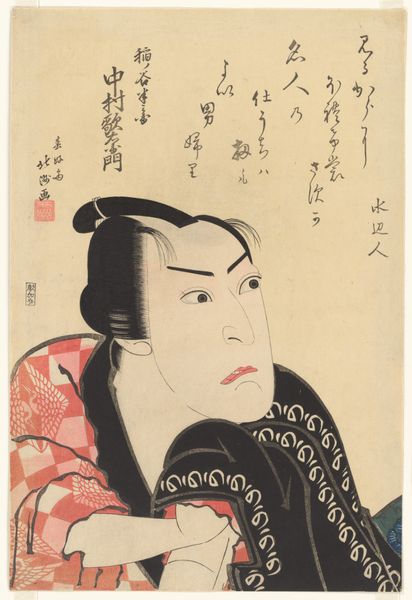
print, woodblock-print
#
portrait
# print
#
caricature
#
asian-art
#
caricature
#
ukiyo-e
#
figuration
#
woodblock-print
Dimensions: height mm, width mm
Copyright: Rijks Museum: Open Domain
Hasegawa Sadanobu made this woodblock print of Nakamura Shikan III as Fukumasuya Monbei in Japan, during the 19th century. Prints of Kabuki actors were very popular at the time, but they were also regulated by the government. This print uses visual codes to convey meaning. The actor’s makeup and hairstyle identify him as a Kabuki performer, while his stern expression and the sword he holds suggest his character may be a villain. Kabuki was a popular form of entertainment, but it was also seen as a threat to social order by the ruling shogunate. Authorities feared that Kabuki performances could incite unrest. To control the Kabuki industry, the government restricted the types of plays that could be performed, the actors who could perform them, and the theaters where they could be staged. Prints like this one were also subject to censorship. By studying prints alongside other cultural objects and historical documents, such as playbills, censorship records, and theater advertisements, we can learn more about the complex relationship between art, entertainment, and social control in 19th-century Japan.
Comments
No comments
Be the first to comment and join the conversation on the ultimate creative platform.


